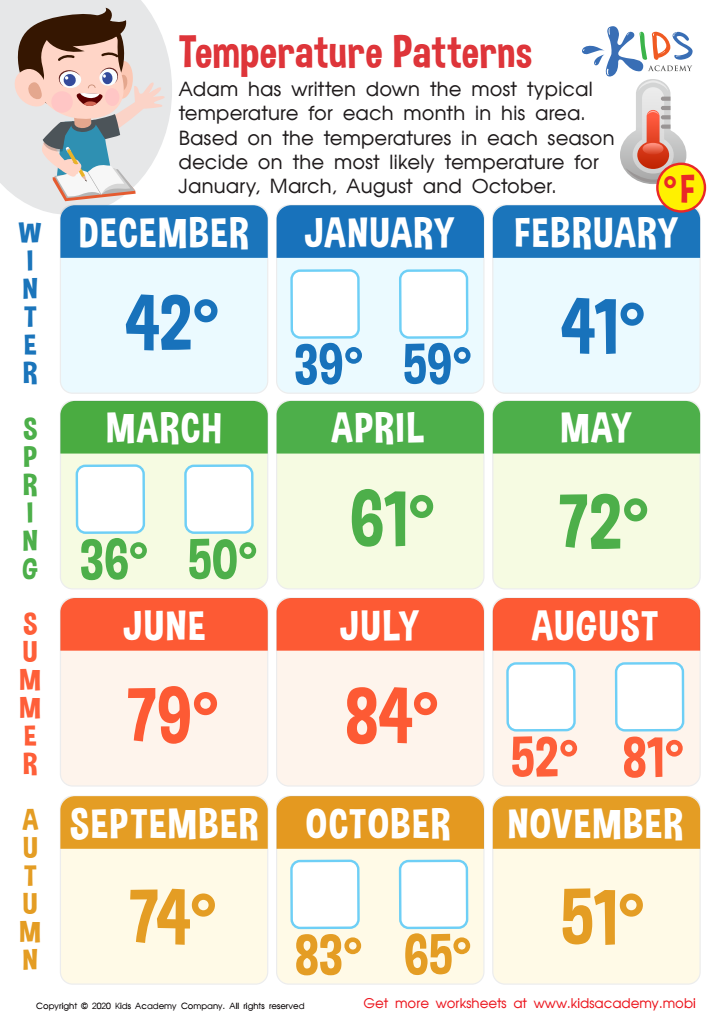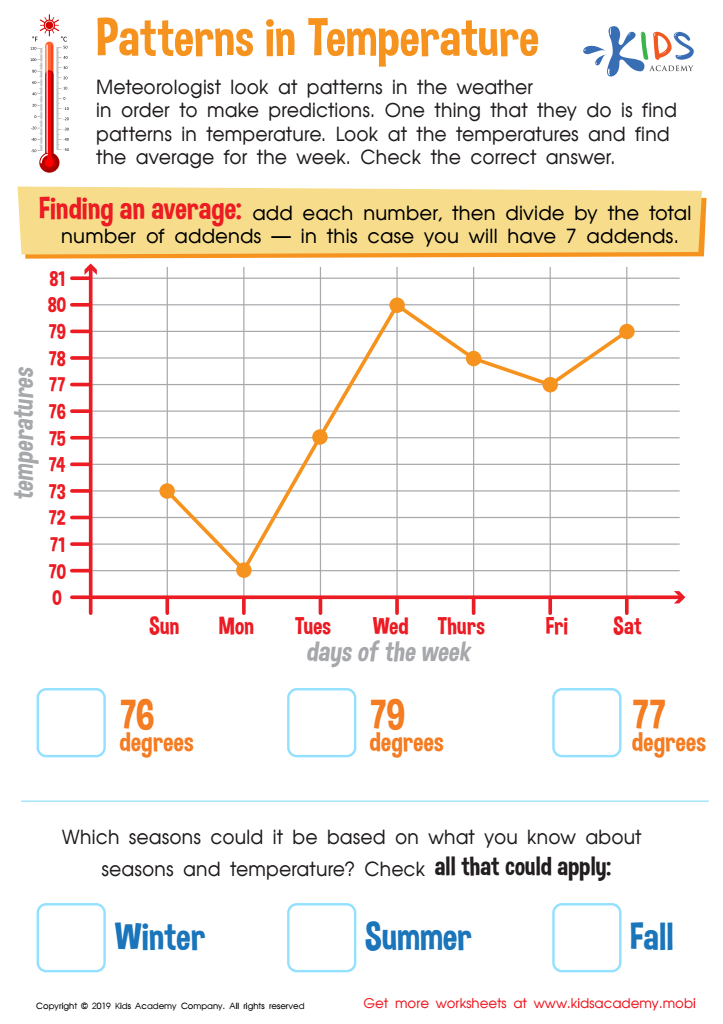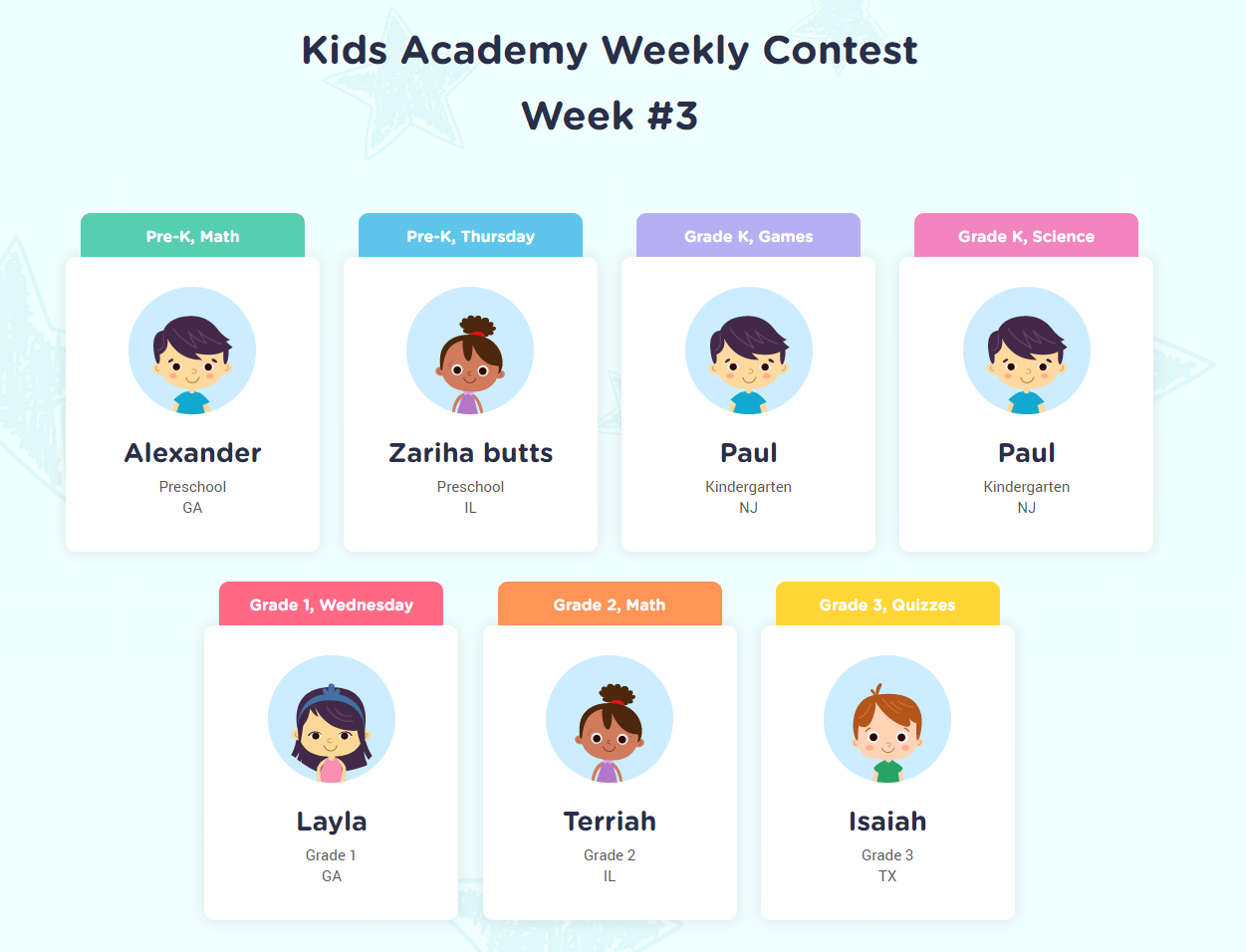Reading thermometers Normal Science Worksheets for Ages 5-8
3 filtered results
-
From - To
Discover our engaging "Reading Thermometers" Normal Science Worksheets designed specifically for children aged 5-8! These printable worksheets introduce young learners to the concept of temperature measurement using thermometers. Through fun and interactive activities, kids will develop essential mathematical and observational skills while learning how to read thermometers in both Celsius and Fahrenheit. Each worksheet focuses on enhancing critical thinking and encourages hands-on exploration, ensuring that science is both educational and enjoyable. Perfect for teachers and parents alike, these worksheets support early science literacy and provide a solid foundation for future learning. Dive into the world of temperature and watch your child's curiosity grow!


Temperature Patterns Worksheet


Reading Thermometers Printable


Patterns in Temperature Worksheet
Reading thermometers is a fundamental skill that intertwines literacy and scientific understanding, making it essential for children aged 5-8. Parents and teachers should care about this topic because it promotes early engagement with scientific concepts and enhances critical thinking. Understanding how to read a thermometer helps children grasp the concept of temperature, a basic scientific measurement that affects daily life—from weather discussions to health awareness and cooking.
Learning to interpret a thermometer also involves literacy skills. Children must understand numbers and scales, enhancing their numerical literacy while reading and processing information visually. Moreover, developing these skills early on fosters curiosity and encourages children to ask questions about the world around them.
Furthermore, practical experiences, like reading a thermometer, enable hands-on learning. This approach not only improves retention but also instills a love for science in young minds. Additionally, it lays a foundation for more complex scientific topics in later years.
By incorporating activities related to reading thermometers in both home and classroom environments, adults can help children develop essential life skills. This fosters independence and the ability to employ critical reasoning in various situations, evidencing the direct applications of what they learn.

 Assign to My Students
Assign to My Students




















